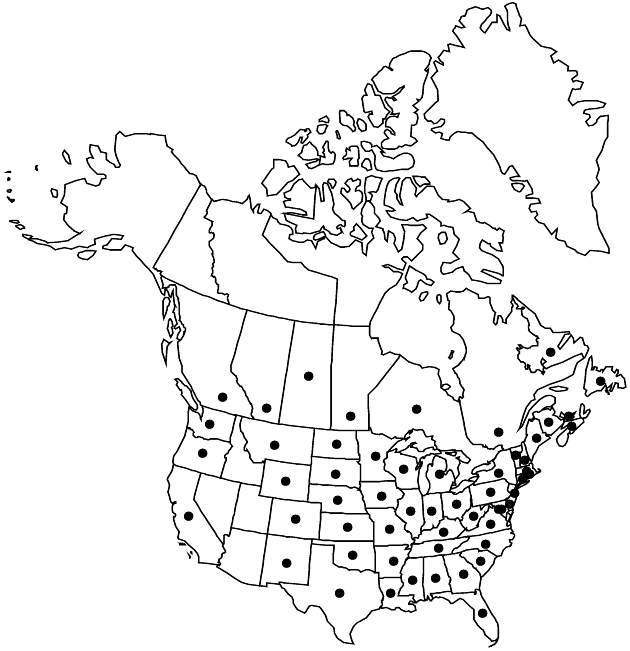Erigeron strigosus var. strigosus
Annuals or biennials; rhizomes none. Stems strigose (hairs appressed to ascending, 0.2–0.5 mm). Leaves: basal blades spatulate to narrowly or broadly oblanceolate, 3–15 (–20) mm wide, margins usually entire, sometimes dentate, sparsely strigose to strigose-hirsute or hirsutulous. Involucres 2–4 mm, sparsely strigose (hairs terete, 0.1–0.5 mm). 2n = 18, 27, 36, 54.
Phenology: Flowering (Apr–)May–Oct.
Habitat: Woods edges, fields, roadsides, and other open, disturbed sites
Elevation: 0–1500 m
Distribution

Alta., B.C., Man., N.B., Nfld. and Labr., N.S., Ont., P.E.I., Que., Sask., Ala., Ark., Calif., Colo., Conn., Del., D.C., Fla., Ga., Idaho, Ill., Ind., Iowa, Kans., Ky., La., Maine, Md., Mass., Mich., Minn., Miss., Mo., Mont., Nebr., N.H., N.J., N.Mex., N.Y., N.C., N.Dak., Ohio, Okla., Oreg., Pa., R.I., S.C., S.Dak., Tenn., Tex., Vt., Va., Wash., W.Va., Wis., Wyo.
Discussion
Variety beyrichii has often been distinguished by its small heads (involucres 2–3 mm) in relatively diffuse and ‘subnaked’ arrays. Smaller-headed plants of Erigeron strigosus do appear to be common on the coastal plain, as is said of var. beyrichii; they also occur elsewhere, and intergradation with other forms of the species is so prevalent that taxonomic recognition of var. beyrichii seems arbitrary and evolutionarily meaningless. Variation patterns in the E. strigosus complex are currently under study by Richard Noyes and Jim Allison.
Some plants identified here as Erigeron strigosus in east Texas and Lousiana (as well as scattered individuals in various Gulf Coast states) fit Shinners’s concept of E. traversii: they produce red, basally ascending stems and a persistent set of spatulate, dentate basal leaves. The ray florets usually lack pappus bristles; plants with 1 or 2 relatively short bristles or setae on each ray cypselae can be easily found. Plants of E. traversii can be nearly identical in general appearance to E. tenuis, sometimes distinguishable only by the difference in pappi (the pappi of E. strigosus always has a conspicuous ‘outer’ corona-like series, a feature essentially lacking in E. tenuis; in general, E. tenuis also has a stronger tendency for colored ray florets, a more annual root system, and more deeply lobed basal leaves). The character states of E. traversii and E. tenuis that tend to cluster in E. strigosus of Texas and Louisiana also can be observed individually in surrounding states. D. J. Van Vleet (1951) noted that E. tenuis-like plants of E. strigosus flower at the same time (early spring) as E. tenuis, while later-flowering plants of E. strigosus (perhaps of separate races) are less similar to E. tenuis, hypothesizing that hybridization and introgression play a role in shaping the morphology of E. strigosus.
Selected References
None.